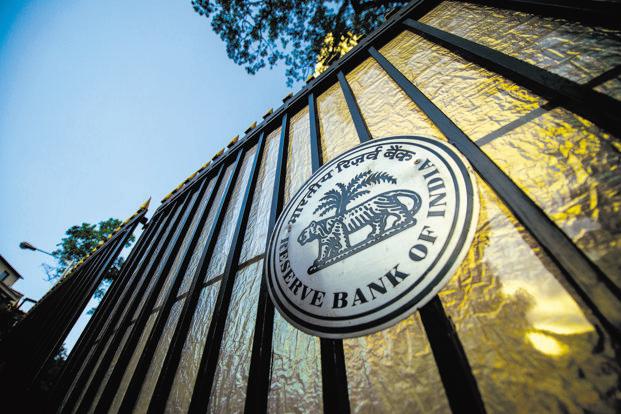The cash deficit in the Indian banking system rose to a record high of Rs 1.92 trillion last Thursday. This will rise further in the next fortnight after Indian firms pay advance tax on estimated profits for the quarter ending March. Where has all the money gone? And what can the India central bank do to infuse liquidity in the system? Let’s answer the second question first. The Reserve Bank of India (RBI) will have to cut banks’ cash reserve ratio (CRR), or the portion of deposits that commercial banks need to keep with the central bank. After a half-a-percentage point cut in January, it is now 5.5%. RBI will have to go for another CRR cut, and it should not wait till 15 March, when it is slated to announce the semi-quarterly review of monetary policy. If the CRR cut doesn’t take effect before 15 March, the systemic liquidity deficit can cross Rs 2 trillion. Today (5 March), Rs 12,000 crore will leave the banking system following Oil and Natural Gas Corp. Ltd’s share auction. This will be followed by draining of nearly an equal amount on account of excise duty payment by Indian firms; and by the middle of March, another Rs 60,000 crore will flow out through advance tax payments by companies. A CRR cut ahead of that will help the system avoid volatility in short-term interest rates. The cost of 90-day money in the commercial paper market has shot up to 11.5-12.5%. Some banks are paying as much as 11% for a three-month certificate of deposit. This is while the yield on 10-year government paper is veering around 8.25%. Banks are required to maintain CRR on their so-called net demand and time liabilities (NDTL) of the reporting Friday of a fortnight. NDTL consists of deposits as well as a bank’s borrowing from other banks, net of its lending to other banks. The second Friday of every fortnight is a so-called reporting Friday. This means there are two reporting Fridays in March—9 and 23. If RBI decides to announce a CRR cut in its policy review, it will be effective 23 March, and by that time the cash crunch in the system will be too high, following the outflow of advance tax payments. Of course, RBI can announce a CRR cut with retrospective effect, from 9 March. It had done so in the past, though rarely. Many bankers are expecting a temporary paring of the statutory liquidity ratio (SLR), too, to tide over the liquidity crunch. SLR refers to banks’ mandatory bond holding. Banks are required to invest at least 24% of their deposits in government bonds, but the overall bond holding of the banking system is currently around 29.5%. A bank can offer its excess bond holding as collateral to RBI and borrow from its repo window at 8.5% to meet its temporary asset-liability mismatches. Any cut in SLR will not generate extra cash for the system, but a few foreign and private banks, which are maintaining just the mandatory SLR level and running the risk of defaults, will get the benefit. In the past, RBI had resorted to a temporary SLR cut—in the aftermath of the collapse of US investment bank Lehman Brothers Holdings Inc. and the credit crisis—but I am not sure whether it will do so now, particularly when government borrowing is at a record high. In fiscal 2012, the gross government borrowing has been Rs 5.1 trillion, and it may remain around this level next fiscal, too, to bridge the high fiscal deficit. The average cash deficit in the system in past fortnight is about Rs 1.5 trillion. Where has all the money gone? One reason behind the cash crunch is RBI’s dollar sales to support the rupee, the worst performing Asian currency that lost some 16% against the greenback last year. Between September and December, RBI sold little more than $12.5 billion to stem the rupee’s rapid depreciation. Besides, it also sold close to $3 billion in the forward markets. In January, too, RBI sold dollars, but the figures are not available yet. For every dollar RBI sells, an equivalent amount of rupees is drained out from the system. The rupee, which had dropped to as much as 53.72 to a dollar in mid-December, is now trading at 49.50. If we assume that RBI sold dollars at an average rate of Rs 51, its $15.5 billion dollar sale has sucked out at least Rs 79,000 crore from the system. Currency in circulation has also gone up by Rs 35,000-40,000 crore in the past few months. Typically, people withdraw money from banks to spend during festivals and elections. Five Indian states have gone to multi-phase assembly elections in the past two months. Yet another cause for drying liquidity is the state of government finances. The average cash deficit of the government ranged between Rs 20,800 crore and Rs 22,400 crore in first three quarters of the fiscal year, but it now has surplus cash of Rs 34,000 crore. This has led to a Rs 55,000 swing in the overall liquidity scenario. Indeed, RBI has been infusing liquidity by buying bonds every week from the secondary market, but this has not had a big impact as the government is borrowing aggressively to bridge its fiscal deficit. So far, RBI has bought bonds worth Rs 1.21 trillion through its open market operations (OMO) to infuse liquidity. Out of a Rs 5.1 trillion borrowing programme, the government has borrowed Rs 4.98 trillion and only one auction for Rs 12,000 crore is left to complete the borrowing. Net of old bond redemption, the government has borrowed Rs 4.24 trillion. A CRR cut alone will not be sufficient to address the liquidity shortage. RBI will have to continue with OMO for cash infusion. The rate cut, too, is not far away.



